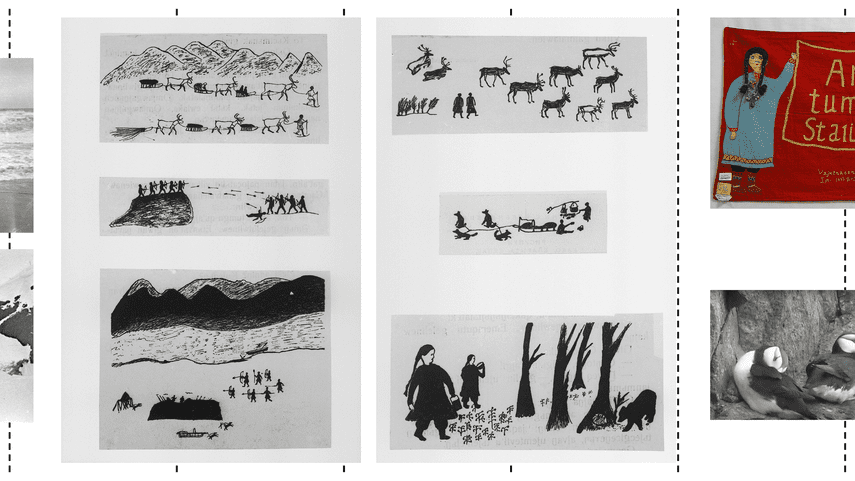The first “wave” of The Coastline Paradox exhibition is devoted to strategies for living in Kamchatka.
Life Not Here
- Date:
- 19 Sep–
13 Oct 2024
- Age restrictions
- 6+
This section of the exhibition explores the phenomenon of “delayed life syndrome,” also known as the “northern scenario,” which psychologists identify as a common mindset among residents of remote regions of the country. They regard their present mode of existence as preparation for a “real life” which will begin at a certain time in the future—for example, after they move to the south or to a big city. Or perhaps it will never come, because a real, full life is the lot of people who do not live here. This way of thinking is not only characteristic for Kamchatka, but also for other remote regions, particularly in the north, and so the curators suggest that we think of it as a trait that is shared by people from all corners of the world. Perhaps a Muscovite dreams of moving to Bali just as a resident of Petropavlovsk-Kamchatsky plans to spend their retirement in Sochi. At the same time, for some people Kamchatka itself becomes a territory located outside their lives, the only place where it is possible to achieve harmony between oneself and the world.

Some works and objects on display at the exhibition directly refer to the experience of residents of the Kamchatka region. They include documentary photographs showing the outdoor pastimes of local residents in pre-revolutionary and Soviet times, and videos by the Primorye art group DVR. In an interview, visitors to a party held by the group at the Sneg pub in Petropavlovsk-Kamchatsky speak about their experience of life in the region and their expectations from the future. Some objects, for example, 3D models of early twentieth-century busts of Koryaks who remained nameless, illustrate the methods colonists used to impose bourgeois culture onto specific Kamchatka contexts.
Other works investigate, or even challenge, the idealised visions of the cherished South. Alina Desyatnichenko’s photos reveal how the modern culture of the Kuban region has been shaped by complex historical processes. While these works might initially be perceived as postmodern pastiche—appearing as staged scenes—they are actually the result of meticulous documentary efforts. And in Lilith Matevosyan’s project Under a Palm Tree, the tree, typically associated with life and leisure in Sochi, emerges as just as much a stranger as the people who have migrated to the city for over a century.